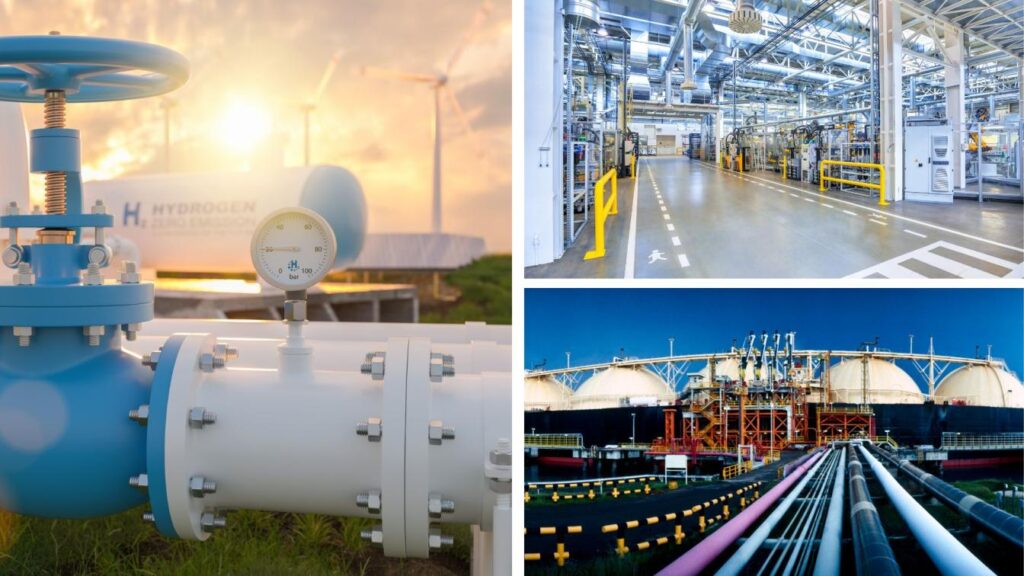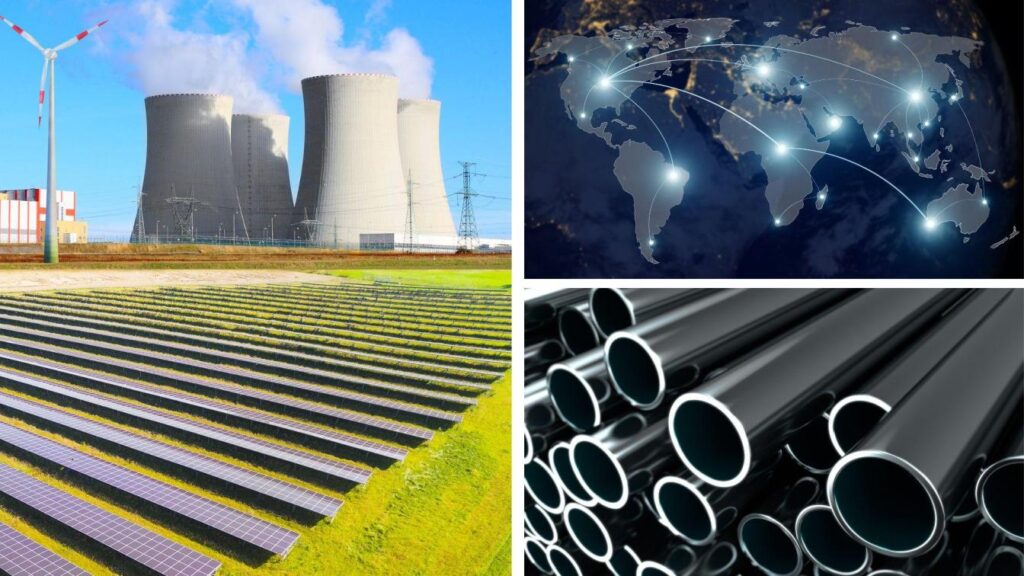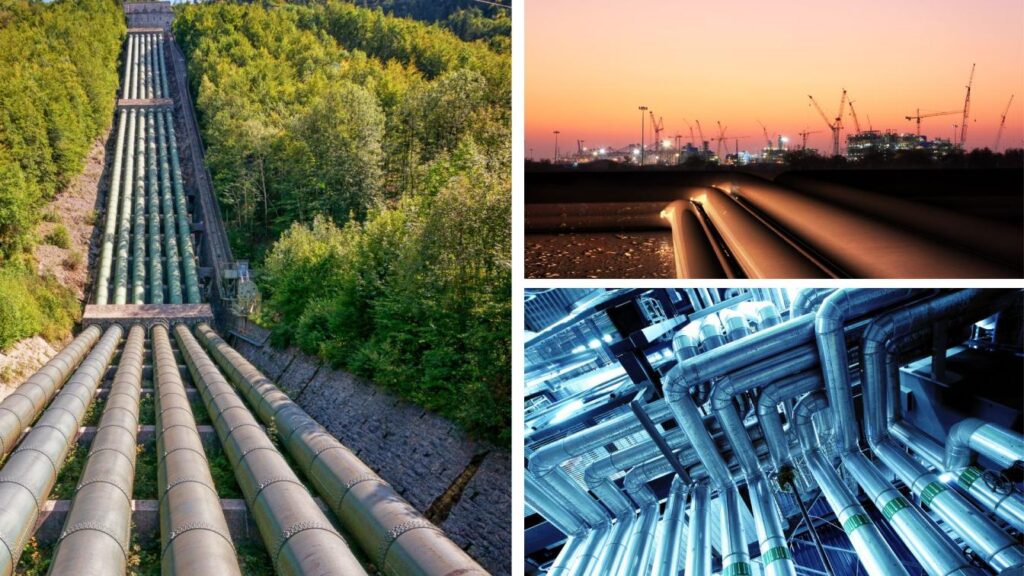At Nexa Pipe, we understand the critical importance of maintaining the integrity and efficiency of oil and gas pipelines. With our cutting-edge pipeline remediation technologies, we are transforming the way the industry approaches pipeline repair and rehabilitation. Our team of experts brings decades of experience and in-depth knowledge to every project, ensuring that your pipelines are restored to optimal performance while minimizing downtime and environmental impact.
Membrane Barrier Technology: A Game-Changer in Pipeline Remediation
Our proprietary membrane barrier technology is at the heart of our pipeline remediation solutions. This innovative approach combines a proprietary fluid membrane with advanced composite reinforcement techniques to create a seamless, durable, and highly effective barrier within existing pipelines. By utilizing fiber integration and dual encasement, we can restore the structural integrity of pipelines while providing superior protection against corrosion, leaks, and other common pipeline issues.
The Benefits of Nexa Pipe’s Pipeline Remediation Solutions
When you choose Nexa Pipe for your pipeline remediation needs, you can expect:
- Minimally invasive, trenchless technology that eliminates the need for extensive excavation
- Rapid installation speed, reducing downtime and allowing your operations to resume quickly
- Versatile pipe diameter capability, accommodating a wide range of pipeline sizes
- Ability to handle a broad spectrum of temperature and pressure ranges
- Excellent fluid handling capability, ensuring the safe and efficient transport of oil, gas, and other fluids
- Opportunity to repurpose pipelines for new applications, maximizing the value of your assets
- Rehabilitation of stranded assets, bringing dormant pipelines back into service
Cured-In-Place Pipe (CIPP): A Proven Solution for Pipeline Remediation
One of our core pipeline remediation techniques is Cured-In-Place Pipe (CIPP). This method involves inserting a flexible liner into the existing pipeline, which is then inflated and cured in place using heat or UV light. The result is a new, seamless pipe within the old one, effectively restoring the pipeline’s integrity and extending its lifespan. CIPP is particularly well-suited for addressing issues such as corrosion, cracks, and leaks, and can be applied to a wide range of pipeline materials and sizes.
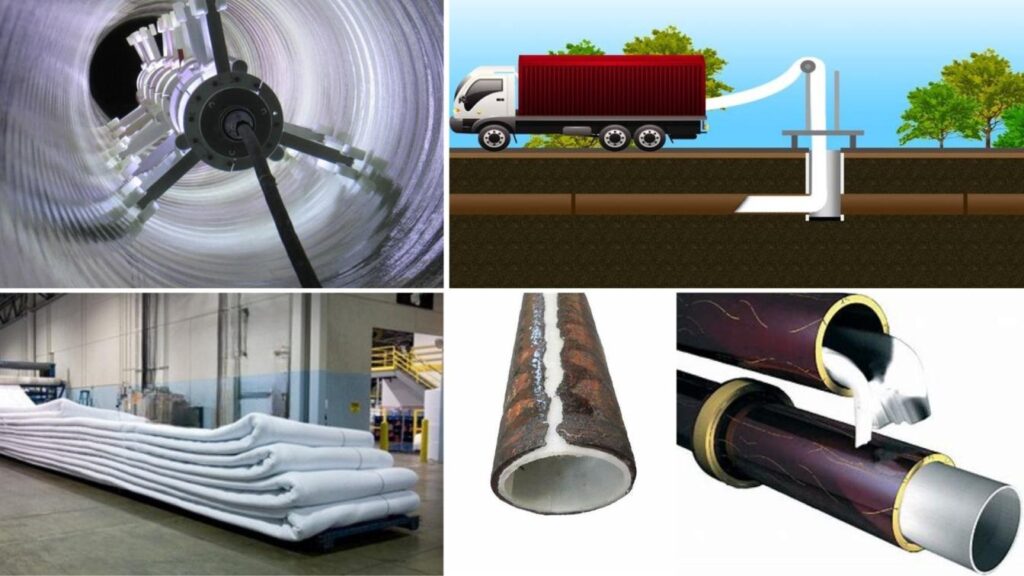
Rigorous Testing and Certification: Your Assurance of Quality
At Nexa Pipe, we are committed to delivering the highest quality pipeline remediation solutions. Our products and processes undergo rigorous ASTM testing and certification to ensure that they meet or exceed industry standards for safety, durability, and performance. When you work with us, you can have confidence that your pipelines are in the hands of experts who prioritize quality and reliability above all else.
Why Choose Nexa Pipe for Your Pipeline Remediation Needs?
When it comes to pipeline remediation, experience, expertise, and innovation matter. Here’s why Nexa Pipe is the clear choice for your oil and gas pipeline remediation needs:
| Benefit | Description |
|---|---|
| Unmatched Expertise | Our team of experts brings decades of experience in pipeline remediation, ensuring that your project is in the hands of knowledgeable professionals. |
| Cutting-Edge Technology | We invest heavily in research and development to bring you the most advanced pipeline remediation solutions available. |
| Comprehensive Solutions | From initial assessment to final installation, we offer end-to-end pipeline remediation services tailored to your specific needs. |
| Environmentally Friendly | Our trenchless technologies and eco-friendly materials minimize the environmental impact of pipeline remediation. |
| Proven Track Record | We have a long history of successful pipeline remediation projects across the oil and gas industry, earning the trust and satisfaction of our clients. |
At Nexa Pipe, we are more than just a pipeline remediation company – we are your partner in ensuring the long-term health and performance of your oil and gas pipelines. With our innovative technologies, unmatched expertise, and commitment to quality, we are revolutionizing the way the industry approaches pipeline remediation. Don’t let aging or damaged pipelines put your operations at risk. Contact Nexa Pipe today to learn how our cutting-edge pipeline remediation solutions can help you maximize the value of your assets, minimize downtime, and ensure the safe and efficient transport of oil and gas. Together, we can build a stronger, more resilient pipeline infrastructure for the future.
In What Cases Oil and Gas Pipelines May Need Remediation by Nexa Pipe Cured in Place (CIPP) Pipe Relining
Oil and gas pipelines are critical infrastructure that transport vital energy resources across vast distances. However, these pipelines are subject to various stresses and deterioration over time, which can lead to leaks, corrosion, and structural failures. When these issues arise, pipeline remediation becomes necessary to restore the integrity and functionality of the pipeline. One innovative solution for pipeline remediation is Nexa Pipe’s Cured in Place Pipe (CIPP) relining technology, which utilizes advanced membrane barrier technology and composite reinforcement to create a new pipe within the existing one.
Understanding the Challenges Faced by Oil and Gas Pipelines
Oil and gas pipelines face numerous challenges that can compromise their performance and safety. Some of the most common issues include:
- Corrosion: Both internal and external corrosion can weaken the pipeline walls, leading to leaks and failures.
- Aging infrastructure: Many pipelines have been in service for decades, and their age makes them more susceptible to deterioration.
- Extreme operating conditions: Pipelines often transport fluids at high temperatures and pressures, which can accelerate wear and tear.
- Environmental factors: Soil conditions, seismic activity, and weather events can all impact pipeline integrity.
When these challenges result in pipeline damage or deterioration, remediation becomes necessary to prevent further issues and ensure the safe and efficient transportation of oil and gas.
The Benefits of Nexa Pipe’s CIPP Technology for Pipeline Remediation
Nexa Pipe’s CIPP technology offers a range of benefits for pipeline remediation in the oil and gas industry. Some of the key advantages include:
- Trenchless technology: CIPP relining is a trenchless solution, meaning that it can be performed without extensive excavation. This minimizes disruption to the surrounding environment and reduces the time and cost of the remediation process.
- Dual encasement system: Nexa Pipe’s CIPP technology utilizes a proprietary fluid membrane and fiber integration to create a dual encasement system. This provides superior strength, durability, and corrosion resistance compared to traditional pipeline materials. Versatility: CIPP relining can be used to remediate a wide range of pipe diameters, from small gathering lines to large transmission pipelines. It can also handle a variety of fluid handling capabilities, including oil, gas, and produced water. Enhanced performance: The smooth interior surface of the CIPP liner reduces friction and improves flow efficiency, while the composite reinforcement provides excellent structural integrity and pressure resistance. Rapid installation: Nexa Pipe’s CIPP technology boasts an installation speed that is unmatched in the industry
- This allows for quick remediation of damaged pipelines, minimizing downtime and lost production.
Case Studies: When to Use Nexa Pipe’s CIPP Technology
There are several scenarios in which Nexa Pipe’s CIPP relining technology can be an ideal solution for oil and gas pipeline remediation:
Case 1: Aging Pipeline Infrastructure
Many oil and gas pipelines have been in service for decades, and their age makes them more susceptible to corrosion, leaks, and structural issues. In these cases, CIPP relining can be used to rehabilitate the aging pipeline, extending its lifespan and improving its performance. For example, an operator may have a 30-year-old steel pipeline that has experienced multiple leaks due to internal corrosion. Rather than replacing the entire pipeline, which would be costly and time-consuming, the operator could use Nexa Pipe’s CIPP technology to reline the damaged sections. The proprietary fluid membrane and fiber integration would create a new, corrosion-resistant inner surface, while the composite reinforcement would restore the pipeline’s structural integrity.
Case 2: Repurposing Stranded Assets
In some cases, oil and gas pipelines may become “stranded assets” due to changes in market conditions, regulations, or production patterns. These pipelines may no longer be economically viable for their original purpose, but they can still have value if repurposed for other applications. Nexa Pipe’s CIPP technology can be used to repurpose these stranded pipelines for new uses, such as transporting alternative fuels or serving as conduits for fiber optic cables. The CIPP liner can be customized to meet the specific requirements of the new application, including temperature and pressure ranges and fluid handling capabilities. For instance, an operator may have a network of gathering lines that are no longer needed due to declining production in a mature field. Instead of abandoning these pipelines, the operator could use Nexa Pipe’s CIPP technology to reline them and repurpose them for transporting produced water to injection wells. The dual encasement system would provide the necessary corrosion resistance and pressure rating for the new application.
Case 3: Difficult-to-Access Pipelines
Some oil and gas pipelines are located in remote or difficult-to-access areas, such as offshore platforms, subsea environments, or densely populated urban centers. In these cases, traditional pipeline remediation methods, which require extensive excavation and heavy equipment, may not be feasible or cost-effective. Nexa Pipe’s CIPP technology, with its trenchless installation process and rapid installation speed, is well-suited for these challenging environments. The CIPP liner can be installed through existing access points, such as pig launchers or receivers, minimizing the need for excavation and surface disturbance. For example, an operator may have a subsea pipeline that has experienced external corrosion due to exposure to seawater. Replacing this pipeline would be extremely costly and logistically challenging. Instead, the operator could use Nexa Pipe’s CIPP technology to reline the pipeline from an onshore access point. The proprietary fluid membrane and fiber integration would create a new, corrosion-resistant inner surface, while the composite reinforcement would restore the pipeline’s structural integrity.
Nexa Pipe’s Cured in Place Pipe (CIPP) relining technology is a game-changer for oil and gas pipeline remediation. With its advanced membrane barrier technology, composite reinforcement, and trenchless installation process, CIPP relining offers a cost-effective, efficient, and versatile solution for restoring pipeline integrity and extending asset life. Whether dealing with aging infrastructure, repurposing stranded assets, or remediating difficult-to-access pipelines, Nexa Pipe’s CIPP technology has proven its value in the oil and gas industry. As operators face increasing challenges related to pipeline integrity and performance, innovative solutions like CIPP relining will play a critical role in ensuring the safe, reliable, and sustainable transportation of our energy resources.

Why Trust Nexa Pipe for Your Pipeline Remediation Needs?
When it comes to something as critical as your oil and gas pipelines, you need a partner you can trust. At Nexa Pipe, we have the expertise, experience, and technology to deliver the best possible solutions for your pipeline remediation needs. Here are just a few reasons why you should choose us:
- In-depth knowledge and insights: Our team of experts has years of experience in the pipeline industry, and we stay up-to-date with the latest advancements in technology and best practices.
- Commitment to quality: We are dedicated to providing the highest quality solutions and services to our clients, ensuring that your pipelines are safe, reliable, and efficient.
- Customized solutions: We understand that every pipeline is unique, which is why we work closely with our clients to develop customized solutions that meet their specific needs and requirements.
- Exceptional customer service: Our team is committed to providing exceptional customer service throughout the entire project lifecycle, from initial consultation to final installation and beyond.
Choose Nexa Pipe for Your Pipeline Remediation Needs
When it comes to pipeline remediation, there’s no better choice than Nexa Pipe. Our advanced CIPP technology, combined with our expertise and commitment to quality, ensures that your pipelines will be restored to optimal performance and reliability. Contact us today to learn more about how we can help you with your pipeline remediation needs.
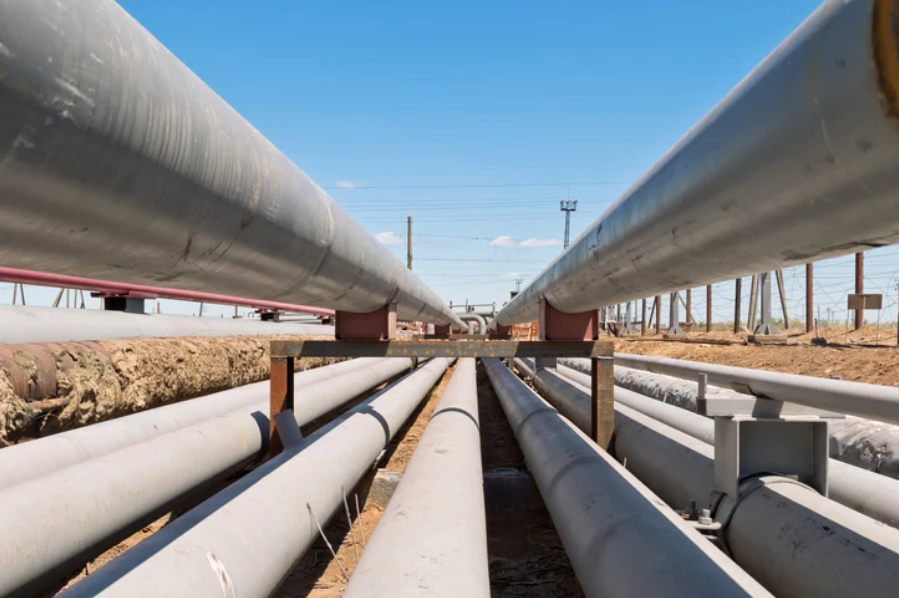
Some key reasons pipeline remediation is critical for oil and gas pipelines:
- Environmental protection – Pipeline leaks can release toxic substances that contaminate soil, groundwater and the surrounding environment. Remediation is needed to clean up spills and prevent further environmental damage.
- Maintaining pipeline integrity and flow – Issues like corrosion, wax/hydrate buildup, and damage can restrict or block flow in pipelines. Remediation techniques are used to remove blockages, repair pipe walls, and restore the pipeline to normal operation. This helps avoid disruptions to oil and gas production and transportation.
- Regulatory compliance – Environmental regulations govern allowable contamination levels and require operators to assess and remediate pipeline releases. Proper remediation ensures companies meet their legal obligations.
- Safety – Damaged or leaking pipelines pose safety risks to workers and the public. Remediating integrity issues and cleaning up spills protects people and property.
- Asset management – Remediation extends pipeline lifespans by repairing problems before they lead to more extensive failures. This allows operators to maximize the value and productivity of their pipeline infrastructure.
In summary, pipeline remediation is a critical process for restoring the integrity and safety of oil and gas pipelines when leaks, blockages or damage occur. It protects the environment, ensures regulatory compliance, and allows pipeline systems to continue operating efficiently over the long term.
